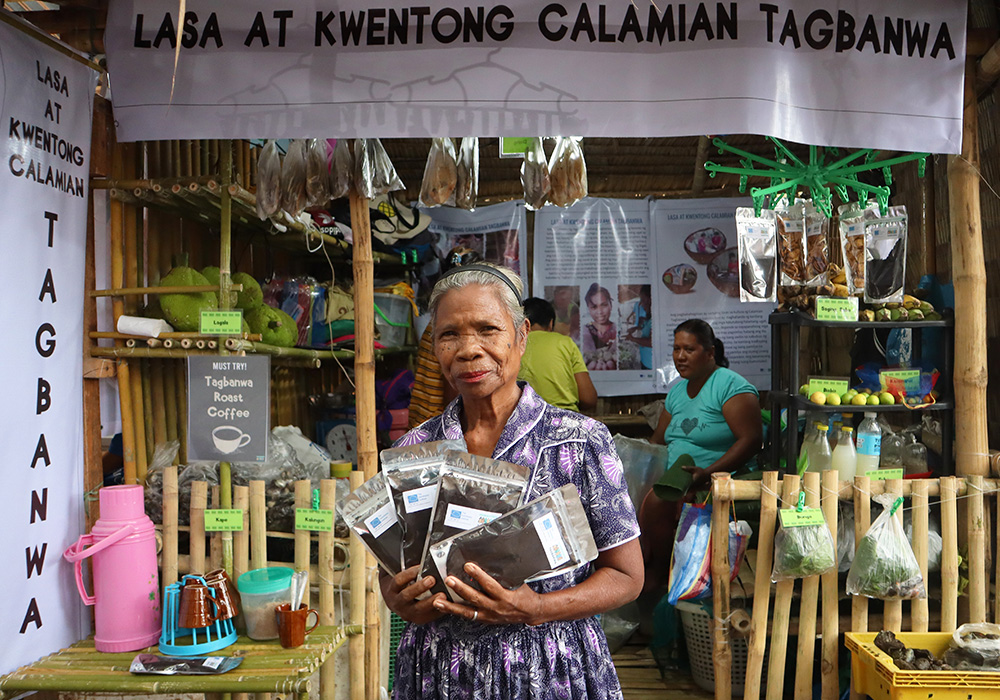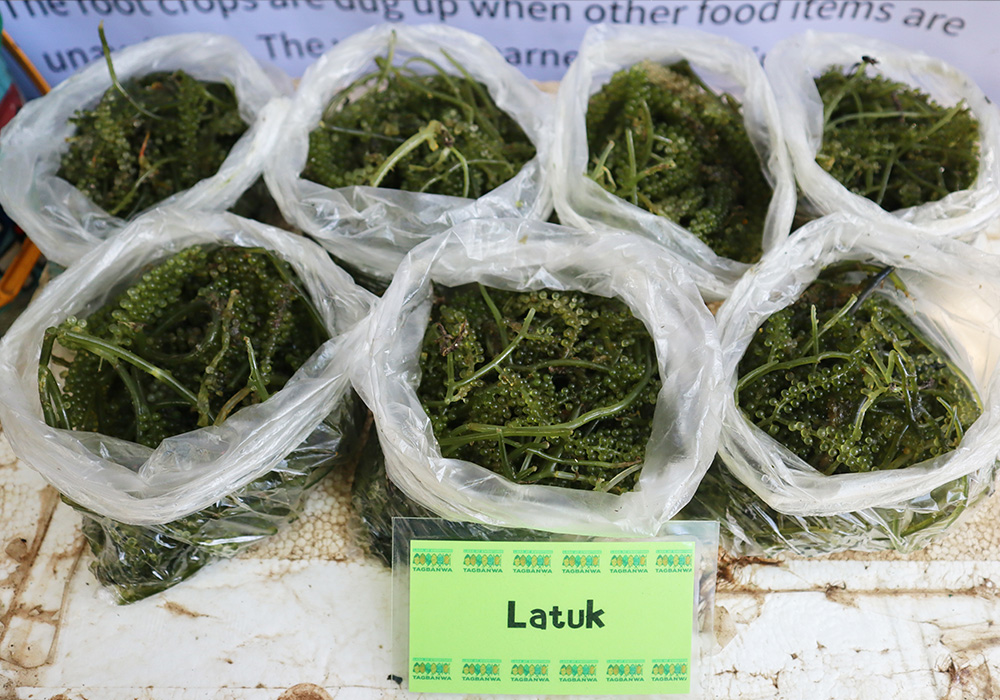
During the 'Kasadyaan Festival' in Coron, the Calamian Tagbanwa women, known as Tagbaway, showcase their traditional food called silipeten. They set up a vibrant booth named "Lasa at Kwentong Calamian Tagbanwa" (Tagbanwa Tastes and Tales). (SAMDHANA/Emil Meron)
- admin
- 12 October 2023
- Feature
Women Behind The Tastes And Tales Of Tagbanwa
The coastal town of Coron awoke from a three-year hiatus imposed by the COVID-19 pandemic to celebrate the 'Kasadyaan Festival', in honor of Roman Catholic Patron, Saint Augustine. The month-long festival revived the annual celebration that the town had been used to, adding more attractions for foreign and national tourists, as well as for the local residents.
Among the festival's participants was the group of Calamian Tagbanwa women, called in their language as Tagbaway.
The Tagbaway were not just ordinary participants. They were leaders and movers in their communities, and they brought with them a wealth of indigenous knowledge and skills in preparing their traditional food known as silipeten. For them, joining the festival was more than just an opportunity to sell products and showcase their culinary prowess; it was a chance to create awareness of the silipeten, which bears the flavors of their culture and heritage.
Silipeten is also more than just a meal for their families; it serves as their lifeline during lean times. Like when the Calamianes islands was hit by Typhoon Haiyan, many of the Tagbanwa in the outlying islands were able to survive on kurot, or the traditional rootcrop, for the immediate days when they were not reached by the humanitarian aid.
The range of foods that are part of the humble silipeten – with at least 62 kinds that were documented in at least one island, is also regaining its value among the tribe. The Tagbaway, since 2017, have been working to promote their culinary traditions. Their efforts to keep the silipeten around their houses, and to re-propagate those that are in danger of being lost, is also a means to ensure there is food they can easily access for their families and communities.
As the Kasadyaan festival took swing, the Tagbaway women set up a vibrant booth they lovingly named "Lasa at Kwentong Calamian Tagbanwa" (Tagbanwa Tastes and Tales).
At their booth, they showcased silipeten, the traditional dishes made from it, and the stories and lullabies behind it. The root crops like kurut and kapari, and a myriad of seafood, including seaweeds and sea shells, were all part of the tantalizing spread.

One other main attraction was the Tagbanwa coffee. While it may seem a misnomer, since coffee does not grow in any of the ancestral domains of the Calamian Tagbanwa, it is their unique roasting style that distinguishes their coffee from the rest. Many foreign tourists were attracted to the rich scents as the Tagbaway roasted fresh coffee during the exhibit. Many could not just pass by, and had to partake of the free coffee samples, and indeed, they were not disappointed!
This is the third time that the Tagbaway have showcased the silipeten. Lasa at Kuwento is their platform for them to express their pride in their culture and heritage, and promote their interdependent relationship with nature in their ancestral domains and waters.